Processes including twisting, are part and parcel of yarn manufacturing.
It also not only increases the strength of the yarn but also affects the elasticity, texture, and appearance of the final product.
A good twist can avoid fraying, breaking, and stretching, which are important to last in the long run with the textiles made.
Comprehending the importance of twisting offers insight into why manufacturers should attach some weight to this process when producing a quality product, which will most certainly endear their products to customers.
The twisting usually consists of feeding large amounts of yarn into a machine that twists them to a certain direction.
The outcome of your yarn is determined by the twist type that would either be S-twist or Z-twist.
The S-twist yarn has its counterclockwise twist while the Z twist yarn has clockwise twist.
Each of the types has specific advantages such as making the yarn more textured or stronger thus allowing the manufacturer to select the twist most suitable for their purposes.
Types of Yarn Twisting Machines
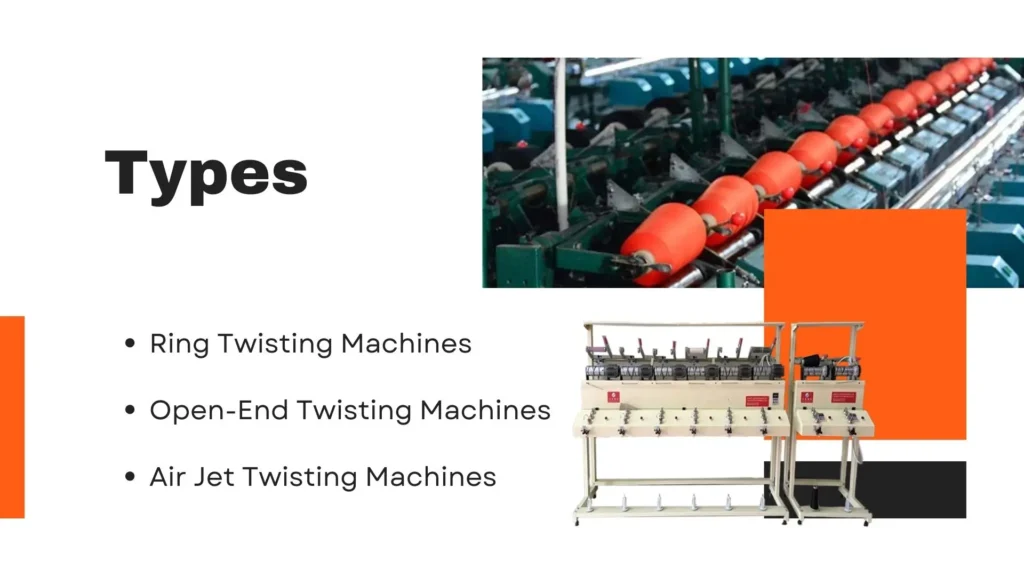
Ring Twisting Machines
Generally, ring twisting machines are the most popular type in the textile industry.
They produce a smooth and steady twist through the ring and traveler mechanism.
Very versatile, it can be used for many types of yarns, including cotton, wool, and synthetic fibers.
Ring twisting machines often produce better twist quality leading to being a satisfactory option for manufacture desirous of high quality textile products.
Open-End Twisting Machines
Fast production has been the major feature of open-end twisting machines.
These machines are very necessary for manufacturers who want increased speed in turnaround.
Its greatest benefit over other twisting machines is its ability to twist yarn from the spinning frame directly rather than from bobbins. This considerably lowers both production costs and time.
It will enable businesses speedily react to market demands and changes, providing cutting-edge competition.
Air Jet Twisting Machines
Because they twist fibers together using air jets, air jet twisting machines are ideal for manufacturing fine or special types of yarns.
This technique is particularly suitable for achieving structures and thicknesses that improve the aesthetic qualities of the finished product.
This allows the manufacturers to mix and match fibers to come up with new-looking yarns that might attract specific niche markets.
Key Components of Yarn Twisting Machines
Spindles
Spindles are the main organs of the yarn twisting machine. High-speed they run and twist the yarn on its spindle.
The quality of the twist with which the spindle is manufactured affects the strength and evenness of the twist, proving it very important for the twisting process.
With the ever-increasing number of reliable high-quality spindles available today, tomorrow’s generation of spindles has to bear the same quality of yarn as produced using the world’s finest spindles.
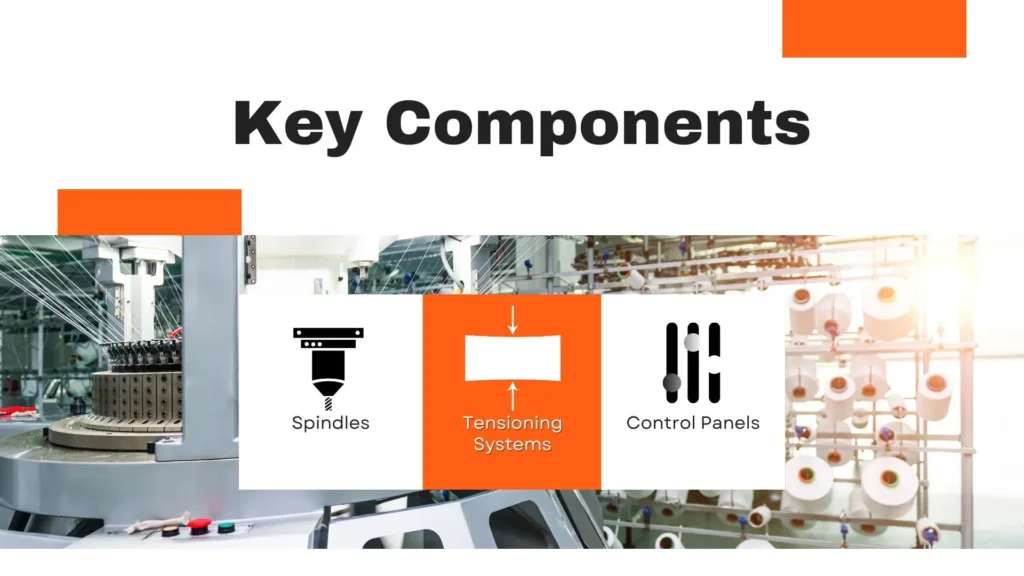
Tensioning Systems
Failure of the yarn to feed evenly through hydro-mechanical machines puts a lot of pressure on a very high-quality system and causes a lot of downtimes.
It also ensures that the yarn does not twist unevenly or break, resulting in increased production costs and delays.
Tensionering systems thus add to the efficiency of the machine and provide better yarn of reduced waste.
Control Panels
These machines are equipped with modern machines that operate in a case of yarn twisting.
It leads to higher production efficiency, thereby allowing the manufacturer to tailor the production process in real time without leaving the production line.
This adaptability guarantees that the final product is always consistent with a quality standard.
And More:
Factors Affecting the Performance of Yarn Twisting Machines
Benefits of Using Yarn Twisting Machines
Advancement in Yarn Strength
One of the most important advantages that yarn twisting machine brings in manufacturing is the increase of yarn strength significantly.
Well twisted yarn is less likely to break while weaving or knitting, producing more durable fabrics.
Such durability is instrumental for manufacturers who want to create products that must last through everyday wear and tear ultimately leading to customer satisfaction.
Improved Aesthetic Qualities
Twisting can add to the beauty of yarn in the form of textures and patterns peculiarly new to it.
Aesthetic improvement is, however, more critical in the production of fashion and home textiles; these have much to do with the feel and appearance of the fabric, which is vital to the market choice of the consumer.
Thus, in developing visually appealing yarns, producers tend to create new collections that meet market demands and consumer appetites.
Applicable to Varied Fiber Types
From natural fibers such as cotton and wool to synthetic materials such as polyester and nylon, these twisting machines can handle all conceivable fiber types.
Hence, this versatility allows manufacturers to expand their portfolio of products, as well as take care of the dynamic demands of the market.
As the business is likely to sweeten many kinds of yarn, it will reach many customers and tap new segments in the textile market.
Also Read:
Yarn Twisting Machine Automation: Benefits and Challenges
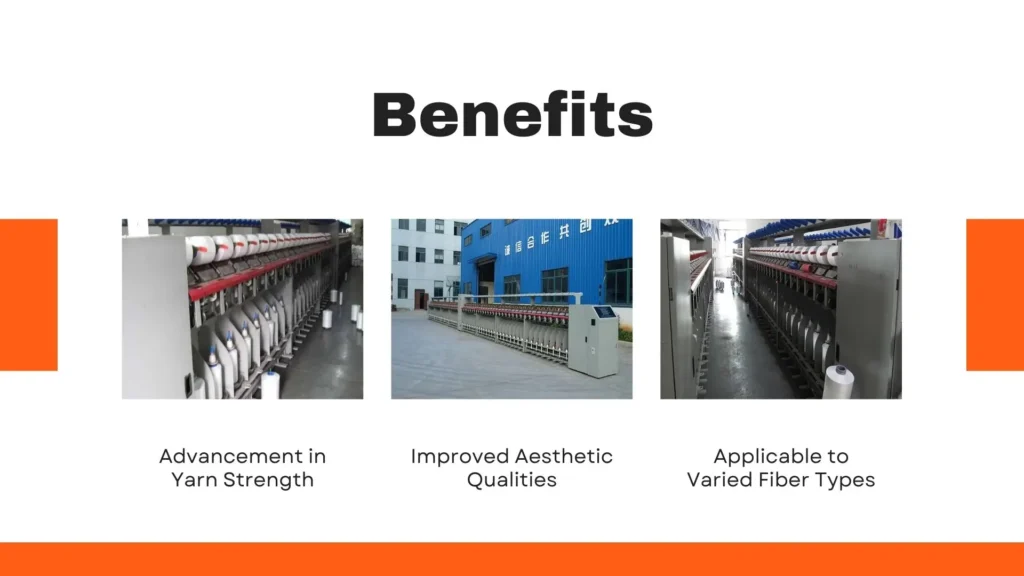
The Role of Technology in Yarn Twisting
Automation Improvement
Various modern twisting machines carry automation technology which penetrates both human labor and error-based work.
The scoop has been increased in production speeds, and now consists thoroughly of faster production efficiency that would create other sources of yarn under normal production conditions.
The scope of this technology is draping operations and assists in reducing labor costs.
Software Integration
Yarn twisting machines utilize state-of-the-art integrated software systems in the optimization for the twisting process such that real-time production data can be monitored.
This enables the operator to make adjustments instantly on the settings, therefore producing a yarn that is of appropriate quality.
Operational efficiency in general of the whole process can be enhanced and waste reduced for a more environmentally friendly production process.
Analytical Data for Quality Control
Data analytics is applied in yarn twisting to give the manufacturer the ability to monitor performance metrics and highlight spaces for improvement.
By data analysis in production, inefficiencies in process can be identified, with the appropriate solutions put in place to improve operations.
It is indeed a high bar that such proactive quality control strategies set in customer satisfaction.
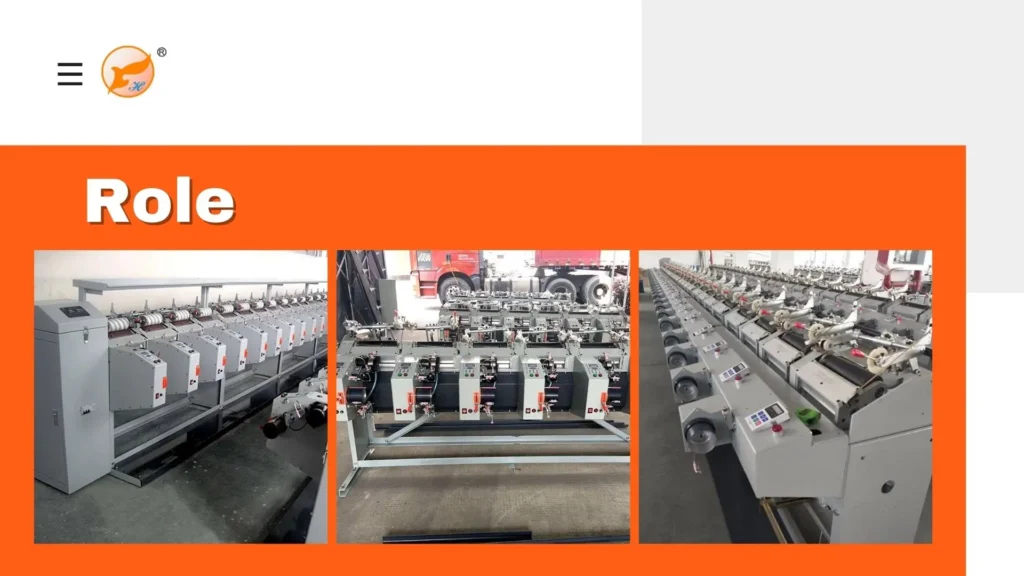
Maintenance of Yarn Twisting Machines
Regular Cleaning
Routine cleaning of yarn twisting machines is compulsory for their optimum performance.
Dust, lint, and other foreign particles accumulated inside the machine cause operational trouble and may be responsible for its break down.
Regular cleaning, besides ensuring good performance, also adds years to lifespan as it reduces maintenance at a later date.
Lubrication Practices
Proper lubrication of moving parts is crucial for reducing friction and wear in well-equipped machines while mechanical failure risk is also minimized because the machine operates smoothly. For good maintenance of performance, production runs smoothly when creating a consistent lubrication schedule.
Inspection Protocols
Periodical inspection of yarn twisting machines helps you to address the problem or symptoms before it becomes a major one.
Proactive maintenance, such as checking for wear and tear of components, saves a great deal of valuable time and money for the manufacturer by preventing costly downtime.
A routine inspection protocol is established for continuous production and operational efficiency.
Choosing the Right Yarn Twisting Machine
Assessing Your Production Needs
Before purchasing yarn twisting machines, screening all one’s personal needs of production is absolutely necessary.
Types of yarn to be produced, production amounts needed, and twist characteristics desired should consider one’s requirements so as to determine which machine would fit with your business goals.
Budget Considerations
Yarn twisting machine acquisition becomes pretty serious with finances up in the air.
One needs to have that budget compared to all potential benefits from increased efficiency and quality of products.
Consider all the long-term advantages when determining ROI, from labor savings to increased production capacity.
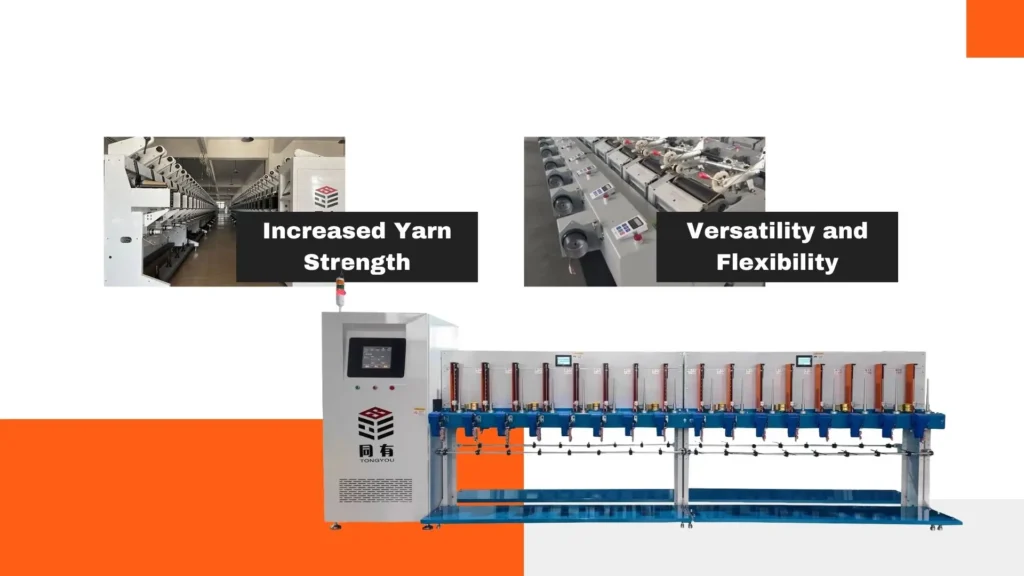
Finding a Reputable Supplier
Choosing a proper supplier is basically very important as it will guarantee that one makes an investment into something worth buying.
You find qualified manufacturers who manufacture high-grade machines plus best possible after-sales service.
To know if the supplier is nice, read from the reviews of customers or do a little research.
Conclusion
However, continuous improvement in technology will lead to specific developments in yarn twisting machines in terms of higher efficiency, more versatility, and automation.
Staying updated with all of these innovations will certainly contribute to a business holding a much more competitive advantage in the textile industry.
Adoption of new technology ensures that manufacturers can adapt to emerging consumer demand while improving the quality of the products.
For having any experience in the textile production business, knowledge of the working mechanics of these yarn twisting machines is fundamental.
Purchasing the appropriate machinery, with a core sound of quality, will develop product enhancement and increase efficiency of operations.
Understanding the twisting process gives power to manufactures for the production of better quality textiles that meet market requirements.
If you need to upgrade your production departments, look for the right yarn twisting machine from the team.
Our team of experts is ready to bring you customized consultations according to your specific needs.
Contact us now and take the first step towards increased performance and quality in your textile production!


